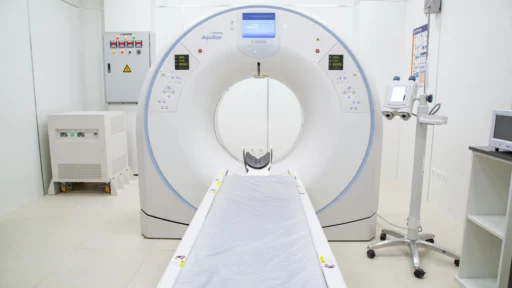Table of Contents:
- Introduction
- Paying for cataract surgery in Nova Scotia
- Nova Scotia hospitals with shortest cataract surgery wait times
- Nova Scotia hospitals with longest cataract surgery wait times
- Interpreting wait times & data limitations
- Advocating for better data access
Introduction
Cataract surgery in Nova Scotia is a medical procedure aimed at treating cataracts, a common eye condition where the lens of the eye becomes cloudy, leading to a decrease in vision. This surgery is prevalent among individuals experiencing vision impairment due to cataracts, affecting their ability to perform daily activities. The primary goal of the surgery is to restore vision by removing the cloudy lens and replacing it with an artificial lens called an intraocular lens (IOL).
Before undergoing cataract surgery, patients in Nova Scotia undergo a comprehensive eye examination to assess the severity of the cataracts, the health of the eye, and to determine the appropriate power of the IOL. This pre-operative assessment also includes discussions about the risks and benefits of surgery, the different types of IOLs available (including those that may offer additional benefits beyond standard lenses, which might incur out-of-pocket costs), and what to expect during and after the surgery.
Cataract surgery in Nova Scotia is typically performed on an outpatient basis under local anesthesia, combined with sedation to ensure patient comfort. The procedure involves making a small incision in the eye to remove the cloudy lens, which is then replaced with the artificial IOL. The surgery is usually quick, lasting about 30 minutes, and patients can often go home the same day.
Post-operative care is crucial for a successful outcome and includes follow-up appointments to monitor the eye's healing, instructions on using eye drops to prevent infection and inflammation, and guidelines on resuming normal activities. Most patients experience a significant improvement in vision soon after surgery, although complete healing can take several weeks.
Paying for cataract surgery in Nova Scotia
Healthcare in Nova Scotia ensures that ultrasound services are widely accessible through the Nova Scotia Health Authority (NSHA). These services are covered under the Nova Scotia Health Insurance Plan (MSI) for medically necessary scans, safeguarding patients against direct charges for standard procedures when referred by a healthcare provider. Nonetheless, the demand for ultrasounds can lead to waiting periods, particularly for non-urgent cases within the public healthcare system.
Nova Scotia hospitals with shortest cataract surgery wait times
Below are three top hospitals in Nova Scotia which have the shortest cataract surgery wait times:
- 🥇 Cape Breton Regional Hospital boasts the shortest wait time for cataract surgery in Nova Scotia, with an average wait of 12.0 weeks.
- 🥈 Solders Memorial Hospital ranks second for the shortest wait time, reporting an average wait of 18.7 weeks for cataract surgery.
- 🥉 St. Martha's Regional Hospital secures the third position in wait times, with an average wait of 22.0 weeks for cataract surgery.
Nova Scotia hospitals with longest cataract surgery wait times
Below are five top hospitals in Nova Scotia which have the longest cataract surgery wait times:
- South Shore Regional Hospital reports the longest wait time for cataract surgery in Nova Scotia, with an extensive average wait of 49.6 weeks.
- Cumberland Regional Health Care Centre ranks second for the longest wait times, reporting an average wait of 41.1 weeks for cataract surgery.
- Yarmouth Regional Hospital secures the third position in wait times, with an average wait of 41.1 weeks for cataract surgery.
- Colchester East Hants Health Centre ranks fourth for the longest wait times, reporting an average wait of 33.1 weeks for cataract surgery.
- QEII Health Sciences Centre (All Sites) ranks fifth for the longest wait time in Nova Scotia for cataract surgery, with an average wait of 22.1 weeks.
Interpreting wait times & data limitations
Several factors can extend the average wait times for surgery in Nova Scotia. Clinical considerations often lead doctors to delay surgeries based on a patient's medical needs or other priorities. Additionally, patients may postpone their procedures due to personal reasons like scheduling conflicts, financial constraints, or a preference to delay treatment. The availability of hospital operating rooms also plays a critical role. These spaces are necessary for surgeries but can be scarce if occupied for other medical procedures or impacted by labor shortages. Seasonal variations further influence both room availability and staffing levels, potentially prolonging wait times during certain periods.
Conversely, average wait times can sometimes seem shorter than anticipated due to various factors. Some patients have flexible schedules, allowing them to fill slots that become available unexpectedly, thus shortening their wait. This adaptability, when averaged with others, can make overall wait times appear more favorable. Seasonality affects this dynamic as well, with certain times of the year experiencing lower demand for surgeries or increased temporary staffing, which can enhance room availability and reduce delays.
We focus on calculating wait times for Priority 4 patients because data for Priority levels 2 and 3 are typically incomplete. Surgeons, specialists, and healthcare administrators use clinical evidence to set these priority levels and target times, aiming to improve patient access and outcomes.
Furthermore, our data does not include patients who opt out of surgery after their initial consultation with a specialist.
Advocating for better data access
We are thankful for the Province of Nova Scotia's efforts in providing hospital wait times for surgeries. Nova Scotia stands out globally for its transparency in reporting hospital wait times and covers a wide array of medical procedures.
We encourage the Province of Nova Scotia to expand its data reporting to include average wait times by doctor, as seen in British Columbia and Saskatchewan. This information would greatly benefit patients by allowing them to choose doctors with shorter wait times.
Readers can consider reaching out to the Province of Nova Scotia to advocate for this beneficial change.








